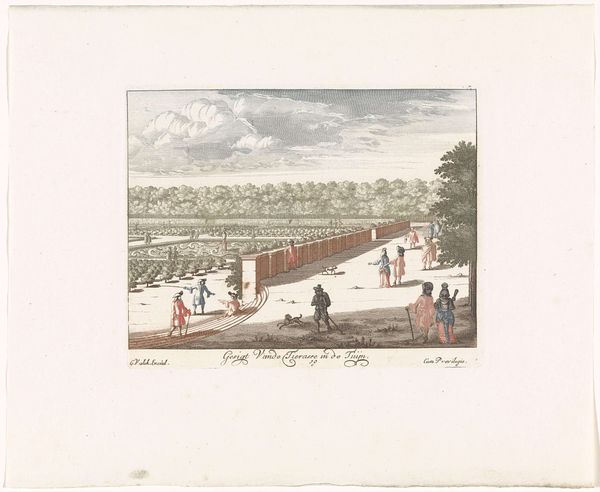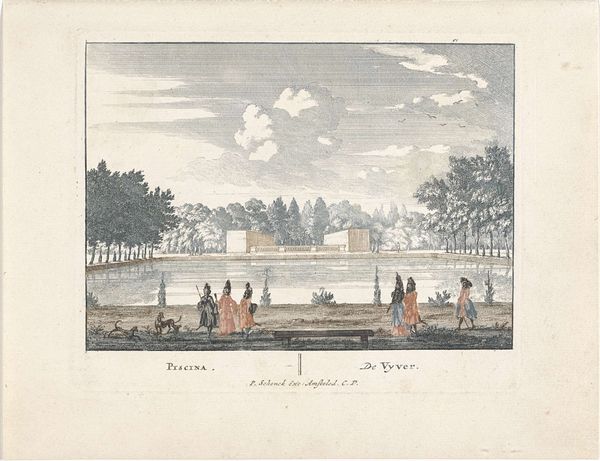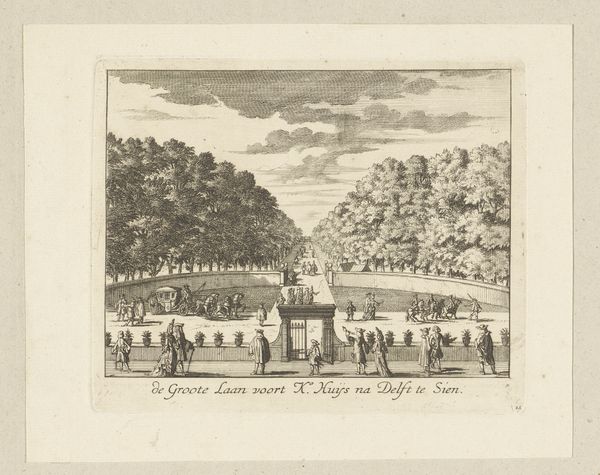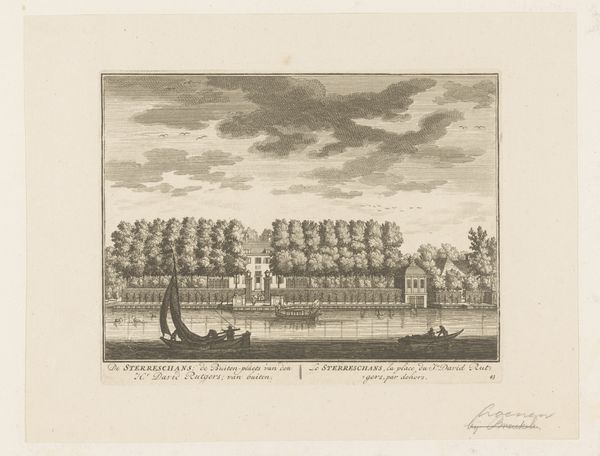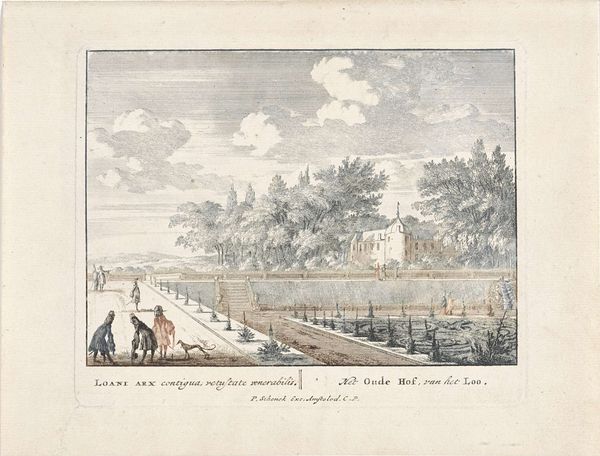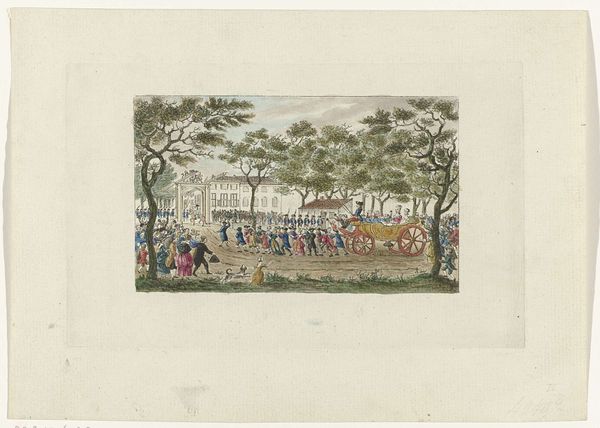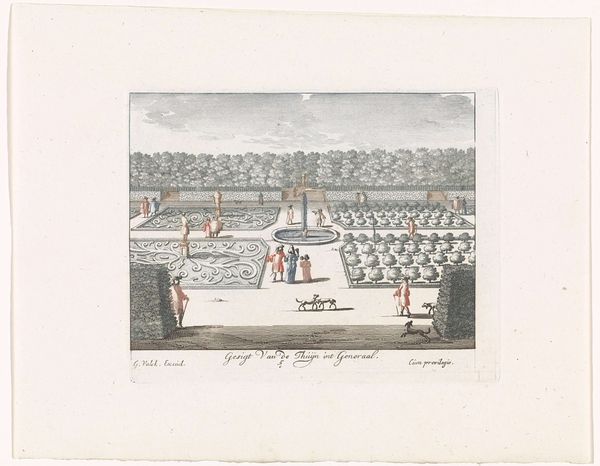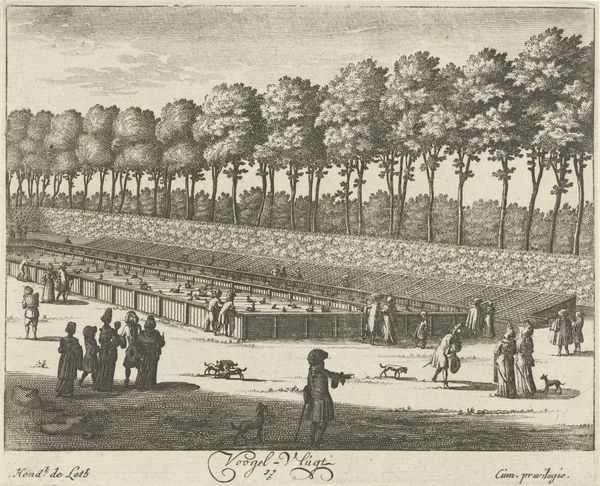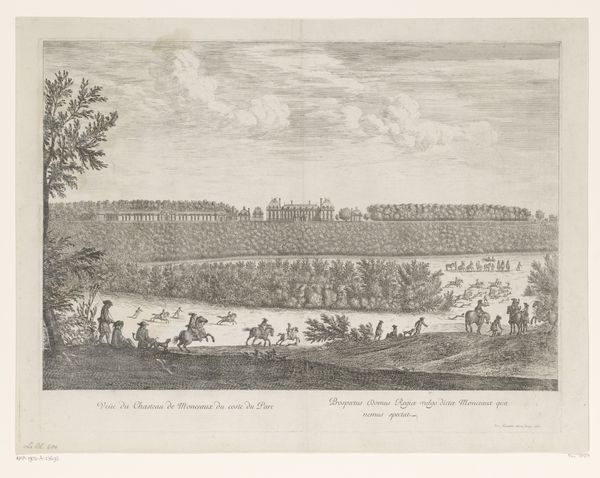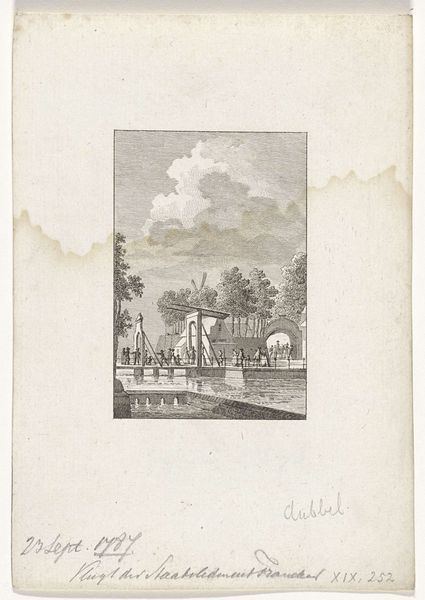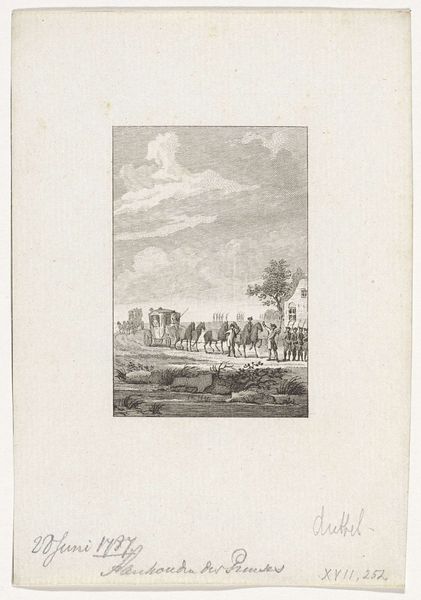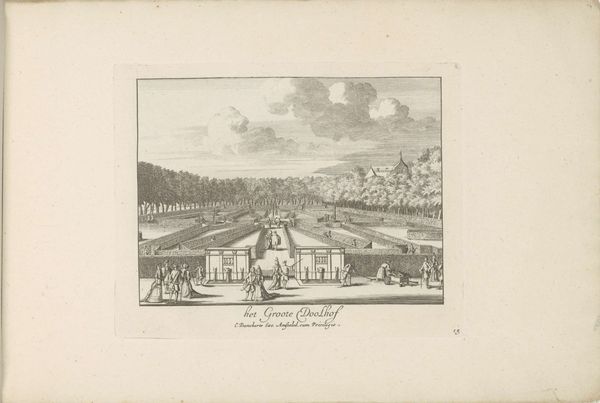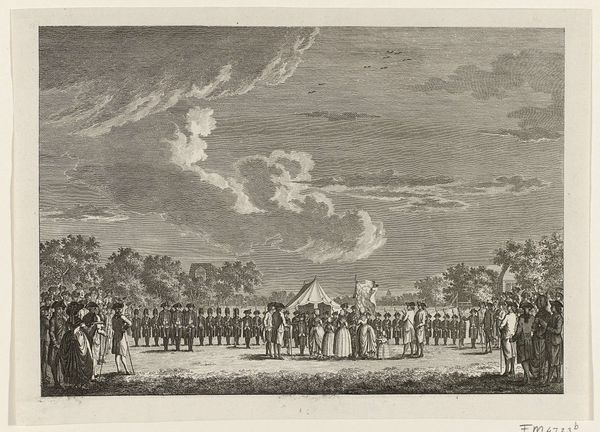
print, engraving
#
garden
#
baroque
#
ink paper printed
# print
#
old engraving style
#
landscape
#
pen-ink sketch
#
cityscape
#
genre-painting
#
engraving
Dimensions: height 128 mm, width 162 mm
Copyright: Rijks Museum: Open Domain
Curator: Here we have a fascinating engraving from 1695, titled "Gezicht op de eendenvijver van Paleis Soestdijk" which translates to "View of the duck pond at Soestdijk Palace," found in the Rijksmuseum collection. Editor: It's quite charming, in a somewhat detached way. The scene feels very ordered, with a rigid structure and limited color range creates a sense of control and formality, yet playful at the same time because of the characters scattered about. Curator: Precisely! Consider the period. The duck pond isn't just a place for ducks, is a marker of elite status, a site of recreation carefully curated within the landscape of power. Who is allowed to be present, how they are presented – are clues about the political and social order being maintained. Editor: Yes, I'm drawn to how the artist has delineated the space with horizontal and vertical lines creating a clear division between nature, architecture and people. It is very linear and clean. There’s a certain harmony and balance in its simplicity. Curator: And who has access to the garden? If we analyze who populates this leisure space, we note those seemingly frozen figures taking a promenade through this aristocratic scene; carefully and intricately engraved so we get the full picture: wealth, privilege, leisure. Editor: While your explanation makes sense given the period and the class depiction of the people present in this piece, my gaze is fixated more with how light interacts with the monochromatic tonality. The hatching and cross-hatching must have required expert penmanship and technique. Curator: It's important not to isolate technique from meaning though. That use of light enhances the splendor, highlighting the grandeur of the palace even in the distance, while obscuring any sign of labor, oppression, or social struggles of the time. This becomes very clear the intention was not only about recording history, but omitting some. Editor: That’s an interesting perspective I have never considered, it really shows that artworks aren’t only pretty aesthetics, they also tell the story behind its creation. Curator: Absolutely! That is why it is vital to constantly analyze how representation, context and audience interact to decode these artistic artifacts.
Comments
No comments
Be the first to comment and join the conversation on the ultimate creative platform.
